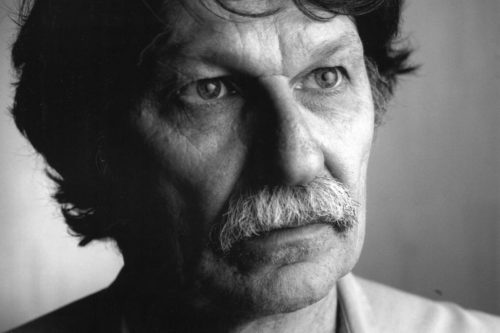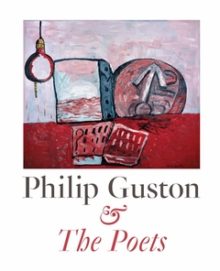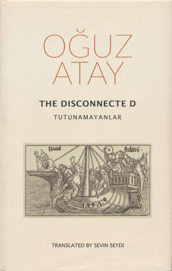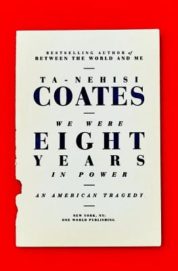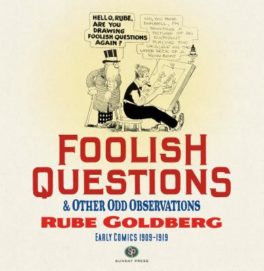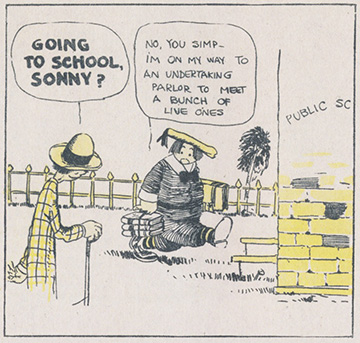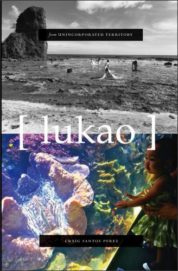
interviewed by Ben Shields
Until recently, Janet Capron—author of the new book Blue Money (Unnamed Press, $16)—was using her literary talent to write pharmaceutical literature and instructional film scripts for oncologists. By the time she met me for a decadent (but non-alcoholic) dinner several weeks ago, that had all mercifully changed. We dined in the West Village's Caffe Reggio, the last of the bohemian coffee houses in which one may order a single drink and linger for the next four hours without harassment. And that is precisely what we did. As we talked about Janet's life on the street—as a junkie, prostitute, writer, and documentarian of degeneracy—I did not hear a single political cliché for the entire discussion, and instead absorbed one prankish cultural critique after another from Janet's side of the cheese plate. This proud Park Avenue schoolgirl-turned-floozy has chronicled her high bourgeois class suicide in an outrageous debut novel—which, as she discusses below, never lets the burden of actual facts get in the way of what things were really like in 1970s New York. Read on for her remarks on Germaine Greer, Peter Pan, and how her life went from the saddest non-publishing story ever to that of a lecture-touring writer.
Janet Capron: You look a little different than your photo.
Ben Shields: Do I? Maybe in the photo I didn't have a beard. Where did you even see my photo?
JC: Somewhere on the Internet, Ben.
BS: How strange. I'm very unimportant.
JC: That can change in an instant. Stick with me, kid. I've got like ten pages now, having gone all my life as a completely beneath-the-radar person. It doesn't take much.
BS: Well, enough about me. I don't want to start off too academically, but one thing that's missing from your book is your college years. Weren't you at Bennington?
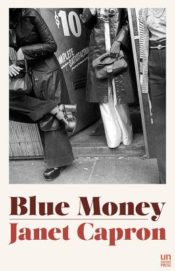 JC: [laughs] I started at Bennington. I would have loved it if I'd really been there. I got kicked out. But this isn't a genuine memoir. I wrote it as a novel, which meant free to access my imagination. I'm a big defender of autobiographical fiction; I don't think there's anything wrong with mixing it up. So, people are saying, oh, you must have felt terrible when Eddie got killed . . . Well, I'm sorry, that didn't happen. I'm more and more regretting having agreed to let it be called a memoir.
JC: [laughs] I started at Bennington. I would have loved it if I'd really been there. I got kicked out. But this isn't a genuine memoir. I wrote it as a novel, which meant free to access my imagination. I'm a big defender of autobiographical fiction; I don't think there's anything wrong with mixing it up. So, people are saying, oh, you must have felt terrible when Eddie got killed . . . Well, I'm sorry, that didn't happen. I'm more and more regretting having agreed to let it be called a memoir.
BS: Well then, I won't ask at any point, "did this really happen?" That's such a philistine-American journalist question, anyway. The more you stick to strict facts in a story, the more the real emotion behind it vanishes.
JC: It's all a line against imagination. I think imagination is in deep peril. Even when the facts of life are more melodramatic than fiction could ever be, just the act of eliminating the imagination and sticking to memory is deadening no matter what.
BS: That is related to the psychoanalytic practice of free-associating. Not worrying about the logical connections. And once that happens, authentic memories do begin to resurface.
JC: There's no such thing as accurate memory, as far as I'm concerned.
BS: When did you go back to Columbia?
JC: 1982. (After getting my BA, I went onto the Graduate Creative Writing Program at Columbia's School of the Arts, where I began work on what would become Blue Money.)
When I was an undergraduate, you could still be a writing/English major, which meant you could take a lot of writing workshops. It was a split major. So, I was completely immersed in writing even then, and there was this brilliant teacher there, J. R. Humphreys, who was the founder and head of the famous Adult Writing Program. Part of me was running from my previous life in the street and very happy to be back in the citadel, the cloister, the ivory tower. I felt protected. At the same time, that life in the street was still very fresh. So, I wrote this story, it was kind of like—do you know Blue Angel with Marlene Dietrich?
BS: Naturally.
JC: It was a take-off on that. It was about a massage parlor hooker. At the time, I had this crush on my physics professor, whom I ended up getting engaged to, but never mind. At that point, it was a distant crush. He was really cute and nerdy. I cast him as this nerd, because I was trying to imagine the two of us together. In the story, he goes to the massage parlor in the heat of the summer, and falls in love with this really tough little hooker who teaches him a bit about life. Humphreys either knew or somehow figured out that I had actually lived this for real, and he said you've got to mine that material now, or you'll lose it forever. He said we tend to forget our twenties after a while. So that was how I came to write Blue Money, an autobiographical novel about my twenties.
BS: When did you actually write Blue Money in its present form?
JC: The last draft was in 2002.
BS: Why do you think it was a difficult sell?
JC: If I had written about this experience as morose, a mea culpa, I think it would have been published a lot sooner.
BS: I never thought of that. If it had culminated in an anorexia diagnosis, it could have been out ten years ago.
JC: Right.
BS: Near the beginning of the book, you're rejoining the bar scene with your friend Michael, whether or not he's real—
JC: Oh, he's real—
BS: OK, and you're rejoining that scene after having left it to be with a radical feminist group. What kinds of things were you doing with them?
JC: I was very enamored of someone called Robin Morgan, who was a really big force in the feminist movement. She spearheaded the burning of the bras. There was this group, I can't even remember the name of it, of which I was a part. I was living with a guy and we were doing a lot of acid. I was 21 . . . A lot of the women were very butch. These were not lipstick lesbians, OK? And they were all Maoists, which now I'm more sympathetic to than I was then. Then it was quite shocking. I wasn't prepared to handle all of that. I didn't feel at home there, plus as I say in the book (I wrote this to be honest to this experience, not to set myself up as some kind of role model): I was an alcoholic and a drug addict, and a sex addict too. I loved all of that. I was a hedonist. I wasn't a very serious person, really. I tried. I had moments. I was capable, but not of sustaining it. Alcoholism and addiction undermined that.
BS: Nothing can compete with that.
JC: No, nothing.
BS: It sounds like this clash you experienced with the feminists may not have had to do with the fact that you weren't serious enough. Maybe they simply weren't fun enough.
JC: It wasn't about fun, I'll tell you that. It was just six months or something. But I thought it was important to establish that because it was a perspective that I held onto throughout everything.
BS: I heard that Germaine Greer is your model feminist.
JC: Oh yes—and she's more than just a feminist, you know. I'm so glad you're familiar with her.
BS: She was just on the BBC earlier this year discussing agricultural issues! She's so broadly learned.
JC: I don't use this term lightly: she's a genius. And my agent is her agent. The Female Eunuch is one of the seminal works of the 20th century.
BS: I agree. And Greer is almost more or less absent from Gender and Women's Studies programs, which is a disaster.
JC: It is a disaster. Because nobody wants to take a look at what's really going on.
BS: Yes, it's a great book. It draws upon the entire Western canon to make an argument about human and female sexuality.
JC: And it's not about "breaking a glass ceiling" [rolls eyes]. Camille Paglia's Sexual Personae is also a book I think about practically every day. Do you know how much feminists hated her?
BS: What do you make of all the recent controversies surrounding Greer's comments on transgender issues?
JC: Do I have to go there? If she's brave enough, I guess I will. My book is all about asking, what is the difference between men and women? We have these very narrow, culturally determined sex roles that have nothing to do with what the real difference is. It's not about high heels, I'll tell you that. That's what the first wave of feminism established, that it's just like being in drag. I don't care what gender. We all know that sexuality is a continuum, and they're acting like it isn't. If we were actually allowed to be a man inside of a woman's body, it could be a sacred thing to be. Like, oh, this should be our priest! This is someone who gets it all.
BS: Speaking of Sexual Personae, there is a line where Paglia says something to the effect of, "how many transsexuals should be seeing shamans instead of surgeons?"
JC: Bingo!
BS: Some gay men also "wish" they were women, without being "transgender," precisely because women are allowed to be in drag at all times! Now, in the Huffington Post blurb for your book, they wrote that Blue Money was a glimpse into a "simpler" New York, before AIDS and gentrification. Do you really think it was that much simpler?
JC: Oh my god, yes, my child. I don't want to patronize you, but in those days, it was so wonderfully innocent compared to now. I'm not saying it was "safe." Now it's "safe," in a lovely 1984 sort of way. I'm being hypocritical, because I love the fact that I can walk around at four in the morning and not be afraid. But I never was afraid, because back then I was so crazed on drugs and alcohol . . . I had a lot of moxie. One thing about my book that is interesting to millennials is that you had hookers living on Sutton Place. And believe me that part is true. No one wanted to live here. The president had said, "New York, drop dead!" It was so great. Everything was so cheap, free, and wild. There was a genuine counterculture, the likes of which I have not seen since. And it spanned many generations. It was all the bohemians that were still left alive, plus all the hippies, plus all the punks, all of us!
BS: The reason I asked was, the life that you recount in the book is far from simple. It made me wonder, when I read that, if it's just a false nostalgia. But you are saying it's not.
JC: I don't think so. Things have gone backwards. For instance, the Black Panthers were still around in those days, and they were idealized. It was an unbelievable intelligentsia leading the way. And they were destroyed. Every last one of them were killed or put into prison, solitary confinement for life. You have to understand, before all that happened, we imagined that we were living in an open society where you could affect change. Now, we're going to have to be much more strategic. It's a lot more sinister now. The press was probably not free then, but compared to now? We don't even know about all the domestic terrorism that's going on in our country, let alone New York. And we have mass incarceration—it affects us, even us, sitting here in our bourgeois bubble. This undermines the entire society.
BS: Let's keep talking about your literary life. What are you reading now?
JC: This great book called As Close As I Can Get to You by Dan Siegler. It's not out yet. His agent is still shopping it around. He asked me for a blurb—my first—and luckily I love the book. The author is a straight man, and through a series of circumstances he gets into drag. And he starts having a little affair with a woman who gets off on it. So, he has to get made up every time he goes to see her. In the three times that they've had sex, she's the only one who gets off. It's sui generis. I thought it was going to be one of these typically millennial stories, which I get impatient with.
BS: What's a typically millennial story?
JC: Well, I don't want to knock anybody, but I'm given books to read that I'm told I'll be interested in because they're by "young feminists," and I'm not interested in them. There are a lot of people getting published who have nothing to say.
BS: At the same time, there is a rise in memoirs.
JC: Don't even mention memoirs to me, because I'll get upset.
BS: Any in particular?
JC: Yes, I'm not naming them. But Dan Siegler's isn't one of them. He starts talking about how it's such a drag, pardon the expression, to have to put your makeup on before you go out. I thought, yeah, a whole lifetime. Weeks and weeks. Not that I don't love to do it at the same time.
BS: Maybe not every morning.
JC: But it's very fun to have it at one's disposal. I can't help but be blonde.
BS: Going blond changed my life entirely.
JC: Doesn't it? I mean you're cute anyway, but now you're blazingly cute! From across a crowded room.
BS: Oh, stop it.
JC: It's true. It's the blonde thing. You're telegraphed. Like, "I want to be perceived as a sex object, thank you very much."
BS: Now one thing that kept coming through to me in this book is, despite all the chaos you have experienced and subjected yourself to in your life, you have read a tremendous amount. I don't mean you merely have a literary style; I mean you actually mention a great deal of literature in the book. Baudelaire, Flaubert, Blake—they're all in Blue Money.
JC: My publisher asked me to take the Shakespeare references out, and I said, no! I can't imagine writing something without putting it in that context. I would feel like I was hyperventilating without that.
BS: I'm the same way. The reason I mention it—I don't do drugs, so I don't know— when you're doing speed and staying up for days, I'm amazed that one of the things you do is read Flowers of Evil out loud.
JC: I did. There's that part where I say I feel guilty about it, reading and reading, because poor people can't do it. I thought it was an unfair thing that I loved books so much and that I had access to this. But I've discovered that the real intelligentsia in my life is almost entirely from the inner city. Which is fascinating to me. There's nothing anti-intellectual about being poor or working class. That was a big revelation.
BS: Is there a book that made you want to become a writer when you were young?
JC: J.M. Barrie's Peter Pan in Kensington Gardens, which is a very subversive, weird book. Because it's really about death and about being outside of society. It's really about being marginalized and completely disregarded. At the end of that book, Peter is in a bardo. He doesn't know he's a fairy. He thinks he's still a little boy. So, he flies back to his bedroom window, and there is his mother, who has another little boy in her arms. She says, "oh, dear Anthony." That's when Peter realizes he's not a little boy anymore. He's been replaced. It's the most tragic thing I've ever read. It's worse than Grimm's Fairy Tales.
BS: I'm going to ask a rather provocative question. You've expressed admiration already for working-class intellectualism. In the book, you mention once or twice that you would consciously hide what you called either your Park Avenue or private school "dialect." I was wondering if you ever found yourself wishing that you could have become underclass, or at least a less privileged class. The reason it's provocative is that it contradicts received notions about how one must regard their "privilege."
JC: I think in general the impulse was to commit class suicide. The longer I'm around the clearer that is to me. I desperately wanted to get out. My grandfather was this "champion of the working man"—but I never saw any working people unless it was the doorman, elevator man, or the handyman. That Park Avenue thing I came from is so rarified, so moneyed. I wanted out. In those days, nothing was gentrified. You had Park Avenue, then at 96th—boom! I couldn't go there. I could barely go down Lexington Avenue. So, it was extremely limited.
BS: Of course, that class suicide is what led you to prostitution. In my mind, people pay for prostitution because they want, ostensibly, a sexual encounter divorced from intimacy. But at least a couple times in the book, you give examples of people obviously not doing that. Plus, you write that sex and marriage, sex and true love, remained intimately linked despite your best efforts. How did an extraordinarily high volume of sex for so many years affect how you experience intimacy?
JC: As a student of Germaine Greer—I think I mention this in the book—I thought it was very important that I come while having intercourse. I'm talking about as a cis-gendered heterosexual woman, coming. I had that experience when I was nineteen. I went out with a young Chicano in San Francisco and he just knew how to do it. He understood. I was in pursuit of that. Yet I had all the hang-ups that most women do. I've since written an essay about it. Part of the reason women have such a hard time is, if it takes them a long time, they're embarrassed. It's not an intrinsic part of the reproductive process, so it's just for one's own pleasure that one would come. Therefore, because it's frivolous, unimportant in some way—
BS: Like homosexuality. The female orgasm and homosexuality are not necessary.
JC: Exactly. For that reason, women are ashamed and embarrassed and don't even try. They have no expectations of their partner. The partner has no expectation of himself. This is not universally true, but it's true to a large degree. More than you could imagine. Because it's still prevalent, I was interested in understanding my sexuality absolutely stripped of all the conventions and everything that had been imposed on it. One of the ways to get in touch with that was to make oneself a pariah outside of society and in that sense, it was genuinely liberating for me. I no longer had to answer to that nice girl, which is so inhibiting.
BS: So, you learned about sex not through "gender and sexuality studies," but—get this—sex!
JC: Exactly! The capacity that females have. I think it terrifies straight men.
BS: It's probably the reason for 90% of misogyny—men know on some level that women are experiencing something sexually that they never will. On a related note, Norman Mailer believed 90% of anti-black racism was because white people knew subconsciously that somehow blacks are closer to sex.
JC: Well, I think Mailer had a pretty active imagination, but I'll tell you one thing about him. He understood human sexuality better than a lot of people do. He was saying: sex used to be extremely consequential. I grew up in this extremely anomalous time when there were no STDs. There wasn't even herpes! If you got some kind of VD, you took penicillin and that was it. He was saying, throughout history sex has always had enormous consequences. The passion of nature is what he was talking about.
BS: You were having sex in the golden era of birth control and no diseases. Now, whenever you're screwing you're thinking about what you could potentially be catching. And while we're still on Mailer, he also discussed the thrill of the knowledge, the risk, that there may be a conception, negated by the pill.
JC: The pill is an awful thing, it really is. I'm not saying everybody should conceive, but I don't think the pill is good for you.
BS: Hormonally it can be disastrous. A lot of people think it's bizarre what Mailer said, but earlier this year I saw in either the Post or Daily News that there are guys now who, when they have sex, purposely wear a condom designed to break. It's disgusting, but it proves the theory correct.
JC: Of course. Because sex has consequences regardless of whether it's conception or not. We can't compartmentalize it as much as we think we can. I was always in search of passionate sex. Amy Schumer has a great line in her HBO special where she says, "Guys, would you make sure that your partner comes? Do you think that we just want to be a witness to your process?" I keep repeating that because a lot of women do that. It's like the guy says in As Close As I Can Get to You, the book about role reversal I'm reading: "I'm OK with it [not coming]." So funny to hear a guy say it! It's a terrible denial of self on such a basic level.
BS: I once met the porn actress Seka. She recounted how during filming, after the guy would ejaculate, the director would yell, "Cut!" And she would say, "Cut my ass, I haven't finished."
JC: Yes—we've lost that. It's another thing that has backslid since the ’70s.
BS: Who was your worst trick?
JC: I don't remember any of them. It's like working in a haberdashery. I mention in the book I found out that sexual chemistry does triumph over circumstance about as often as it does in ordinary life: rarely. Once in a great while you'd have this physical chemistry for one reason or another. But honestly the others are all interchangeable, transactional. Bing bing bing!
BS: It makes me think of Bowie's best album, Station to Station. He couldn't remember recording it. I think that artistic creation and casual sex are not unrelated.
JC: Oh yeah. I do remember a lot of the women I worked with, though. I'm not trying to romanticize it, but they were really outlaws. Especially those madams. They had decided they were not going to give a damn about what society thought of them. One that I particularly admired had this beautiful little penthouse somewhere around Sutton Place. One of her really close friends was Miles Davis. There was an element of this that was very counterculture. It was exciting, I have to say. You know, they talk about "the male gaze" now, but that works on so many levels. It's not just men. It's all the "nice" people in society.
BS: The "nice" gaze—I love that idea! What are your politics beyond sex?
JC: I am involved with an activist group called African People's Socialist Party. Omali Yeshitela is their leader. He's the most brilliant person I've ever listened to. I discovered him because I saw a flier back in 2008 for a talk he was giving, speaking out against Obama. No black person in the country was doing that then. The first time I went to hear him speak—and this is all a matter of public record—he talked about Obama going up to Martha's Vineyard with all the Wall Street fat-cats where he was vetted and interviewed, and Omali Yeshitela said that was when Obama got the job. This was before the election! He also said that Obama was going to get away with doing more than any white conservative male would ever dare to try and do. So, Chairman Yeshitela has become my leader. It's unbelievable, the integrity he has.
BS: Do you feel that really happened?
JC: The police militarized under whom? Obama. The drone program, wars escalated—and mass incarceration? Mushroomed under Obama. I read Chris Hedges religiously, and Glenn Ford of Black Agenda Report. You must get that. Black Agenda Report doesn't even try and reach the white community, though plenty of white people are reading it. It's so brilliant and cogent. When I need to hear the truth, I go there.
BS: Are you single?
JC: I am. I'm so happy. Once the hormones weren't raging anymore, I felt this enormous relief. All of a sudden, I could do other things. I could go to the museum. It freed me up. I haven't had much luck in love at all. I had a shrink once say to me, "Good and kind aren't even on your list." I think they would be now, but that was true then. Funny, sexy, and brilliant were very high on my list, and good and kind were just whatever.
BS: God, do I relate to all of that. Desire can be wonderful but it can really poison your mind. I've already lost years to all of that.
JC: I know, and you've got a lot of years left. I can remember throwing the I Ching because I wanted things to work out so bad. Obsession—it's just the worst. Proust's Swann's Way is the best book about obsession ever written.
BS: It's even worse if you tend to intellectualize everything. You become obsessed with the obsession. But back to tricking. The PC term for prostitution is now "sex-worker." What do you think—
JC: I hate that. It sounds so corporate. It's like when the waiter comes and says, "Are you still working?" No, I'm eating. I hate it, hate it, hate it. What's wrong with whore? "Sex-worker" is like calling a woman a "lady"—it's a euphemism. I don't think whores want it. This is what I'm for: the decriminalization of prostitution. OK? And let's stop pathologizing every woman who ever chose to be a prostitute. Let's just drop that right now. Nowadays, it's fine to sleep around with guys and get nothing from it. Including satisfaction. In our society, that's fine—god forbid you should get paid for it. Then you still have women divided against themselves, the good girls versus the bad girls. Do you think that doesn't work on women subliminally? Now my experience isn't true of all prostitutes. But my experience is enough to tell me that the received opinion, most of what we are told about prostitution, is a total lie. So, women are really at odds with themselves. I see that as something that has to be dealt with. Not legalization—we don't want government control.
BS: By obsessively campaigning for legalization of certain sexual decisions, it can accidentally shift the mentality to, "we can't accept this until the state does."
JC: Yeah. And then what? People tend to dismiss sex as all very minor and silly. Gore Vidal once said, when they've got you by the short hairs, they've really got you. Originally it was the church that had control over people's sexuality. There's not any sex in movies now, it's just violence. They don't even bother with sex!
BS: I know. One example, perhaps you like this film, but Todd Haynes's lesbian film Carol—
JC: Oh, I hated that fucking movie. It's like two polite little lady narcissists that don't even have genitals as far as I can tell. Give me a break! I hated it.
BS: How do you think it would have changed your experience as a prostitute if it had been legal, like in Amsterdam?
JC: I thought the women I saw in the window in Amsterdam were fantastic. But that's a much different government, for one thing. When I was doing it, we all had terrific doctors, we were all very clean, we didn't need the government regulating anything. We kept all our money, didn't pay taxes. We were outlaws. The way it's pathologized now—people think any girl who decides to become a whore is mentally disturbed, unstable, comes from a terrible home, abused. No! That's not true. There are all kinds of reasons. Including grad students at NYU who can't afford tuition.
BS: Edmund White talks about that, how there wasn't this huge gap between hustling and the middle class in the past. Like you'd hire some hooker, and during the pillow talk you'd find out they were a law student.
JC: You know, he was a real champion of mine. I met his husband, the writer, Michael Carroll, and I started telling Michael about my book. He kept saying, you should really write Edmund. Finally, I screwed up the courage and sent him 70 pages of the book. That same day, I get this absolutely wonderful response saying he loved the chapters, and he was helping me with my query letter and everything. My book is now in the window at Three Lives Books, and it's on the same shelf as Edmund White's Our Young Man. Every time I see that, I feel like Anne Baxter in All About Eve.
BS: Do you know any young prostitutes?
JC: I know one. She recently got sober. Frankly there's a little bit of a lack of curiosity on my part. I do know that it's changed in ways that are unappealing to me. When I was doing it, there were all these cathouses. It was convivial. We depended on each other. Now it sounds so lonely, comparatively, with these escort services.
BS: We agree on everything.
JC: I've noticed that. Are you Pisces?
BS: No, Aries.
JC: Thank God.
BS: You're averse to Pisces?
JC: No, they're just afflicted. Alcoholics and drug addicts. I'm Libra with a Capricorn Moon.
BS: That can be a really difficult Moon sign. You're prone to convincing yourself that the right way is always the hardest way.
JC: Oh my god. I hate that very notion, and I'm so burdened with it.
BS: I want to end with whether you'd do it now. Not meaning "if you knew what you know now" kind of cliché way, but meaning if you were that age, in today's world, would you do it all?
JC: A woman at a reading asked me, full of judgment, full of confrontation, "Would you let your daughter do this?" So, I said, first of all, my poor hypothetical daughter, who would probably have an alcoholic father too because I tend to mate with my own afflicted kind, would probably end up an alcoholic or drug addict like her parents. That worries me a hell of a lot more than if she were a grad student at NYU and needed to pay the tuition! No big whoop. Big deal. Hell yeah.
Click here to purchase this book
at your local independent bookstore


